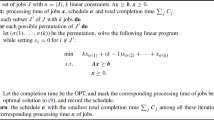Abstract
It is known that interval computations are NP-hard. In other words, the solution of many important problems can be reduced to interval computations. The immediate conclusion is negative: in the general case, one cannot expect an algorithm to do all the interval computations in less than exponential running time.
We show that this result also has a bright side: since there are many heuristics, for interval computations, we can solve other problems by reducing them to interval computations and applying these heuristics.
Abstract
Извецтно, что интервалъные вычиления ПР-сложны. Друтими словами, решение многх важных задач может быжтъ сведено к интервалъным вычицлениям. Первое очевидное следствие зтого Факта негативно: в обшем слмчае мы не можем поцтроитъ алгстроитм, который выполнял цы все интервалъные вычисления быстрее, чем за зксноненциалън ое время.
Нами показано, что зто свойство имеет и свою выгодную сторону: посколъку для интервалъных выцислений сушествует мното звристик, другие задачи могут бытъ вешены решены сведением их к интервалъным вычислениям с далънейшим применением зтих звристик.
Similar content being viewed by others
References
Adams, D.Life the Universe and everything. Pocket Books, N.Y., 1983.
Dubois, O.,Counting the number of solutions for instances of satisfiability. Theoretical Computer Science81 (1991), pp. 49–64.
Gaganov, A. A.Computational complexity of the range of the polynomial in several variables. Cybernetics (1985), pp. 418–421.
Garey, M. and Johnson, D.Computers and intractability: a guide to the theory of NP-completeness. Freeman, San Francisco, 1979.
Hansen, E. R.On solving systems of equations using interval arithmetic. Math. Comp. (1968), pp. 374–384.
Kolacz, H.On the optimality of inclusion algorithms. In: Nickel, K. (ed.) “Interval Mathematics 1985”, Lecture Notes in Computer Science 212, Springer-Verlag, Berlin, Heidelberg, N.Y., 1986, pp. 67–79.
Koutsoupias, E. and Papadimitriou, C. H.On the greedy algorithm for satisfiability. Information Processing Letters43 (1992), pp. 53–55.
Kreinovich, V.Maslov's increasing freedom of choice strategy: on the example of the satisfiability problem. Leningrad Center for New Informational Technology “Informatika”, Technical Report, 1989 (in Russian).
Kreinovich, V., Bernat, A., Villa, E., and Mariscal, Y.Parallel computers estimate errors caused by imprecise data. Interval Computations, 2 (1991), pp. 31–46.
Kreinovich, V., Lakeyev, A. V., and Noskov, S. I.Optimal solution of interval linear systems is intractable (NP-hard), Interval Computations 1 (1993), pp. 6–14.
Lakeyev, A. V. and Noskov, S. I.A description of the set of solutions of a linear equation with interval defined operator and right-hand side. Russian Acad. Sci. Dokl. Math.47 (1993), pp.518–523.
Maslov, S. Yu. and Kurenkov, Yu. N.The increasing freedom of choice strategy for the satisfiability problem. In: “Proceedings of the USSR National Conference on Methods of Mathematical Logic in Artificial Intelligence and Programming”, Palanga, 1980 (in Russian).
Maslov, S. Yu.Theory of deductive systems and its applications. MIT Press, Cambridge, MA, 1987.
Moore, R. E.Methods and applications of interval analysis. SIAM, Philadelphia, 1979.
Poljak, S. and Rohn, J.Checking robust non-singularity is NP-hard. Mathematics of Control, Signals, and Systems6 (1993), pp. 1–9.
Rall, L. B.Optimization of interval computations. In: Nickel, K. (ed.) “Interval Mathematics 1980” Academic Press, N.Y., 1980, pp. 489–498.
Ratschek, H. and Rokne, J.Optimality of the centered form. In: Nickel, K. (ed.) “Interval Mathematics 1980”, Academic Press, N.Y., 1980, pp. 499–508.
Rohn, J. and Kreinovich, V.Computing exact componentwise bounds on solutions of linear systems with interval data is NP-hard. SIAM Journal on Matrix Analysis and Applications (SIMAX)16(2) (1994), pp. 415–420.
Author information
Authors and Affiliations
Rights and permissions
About this article
Cite this article
Traylor, B., Kreinovich, V. A bright side of NP-hardness of interval computations: interval heuristics applied to NP-problems. Reliable Comput 1, 343–359 (1995). https://doi.org/10.1007/BF02385263
Received:
Revised:
Issue Date:
DOI: https://doi.org/10.1007/BF02385263




